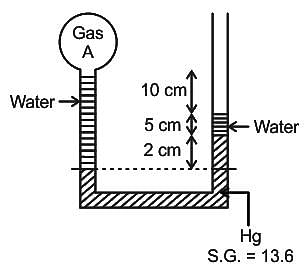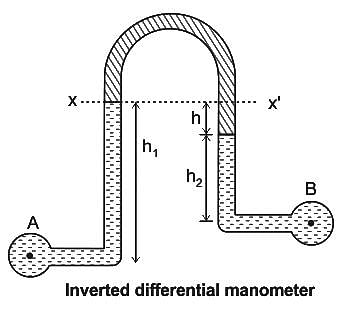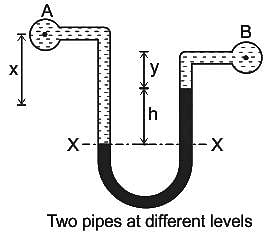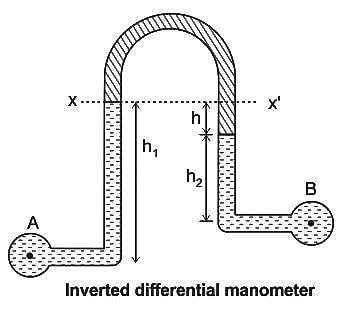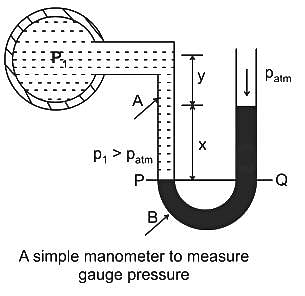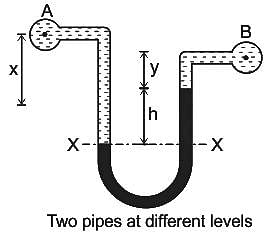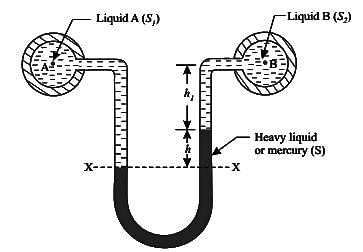Test: U-Tube Manometer - Civil Engineering (CE) MCQ
10 Questions MCQ Test Fluid Mechanics for Civil Engineering - Test: U-Tube Manometer
The absolute pressure of gas A in the bulb in 'mm of Hg' is
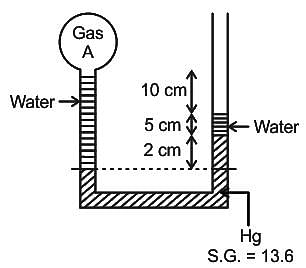

Differential manometers are the devices used for measuring the difference of pressure between:
In a U tube manometer filled with mercury and measuring the pressure of air in a container, the difference in height of the two columns is 12 cm. If the specific weight of mercury is 13.6 kg/liter, then what is the pressure measured by the manometer? (g = 10 m/sec2)
It is required to find the pressure difference between two horizontal pipes through which water is flowing using an inverted manometer. Two monomeric fluids with specific gravities 13.6 and 0.8 and are available. Which manomeric fluid is to be used now?
In a differential manometer a head of 0.6 m of fluid A in limb 1 is found to balance a head of 0.3 m of fluid B in limb 2. The ratio of specific gravities of A to B is
U type of configuration is possible in _____ for pressure measurement.
A pipe contains an oil of specific gravity 0.9. A differential manometer connected at the two points A and B shows a difference in mercury levels as 15 cm. The difference of pressure at the two points A and B will be (Note: consider the density of mercury as 13600 kg/m3)
A simple U tube manometer connected to a pipe in which liquid is flowing with uniform speed will give which kind of pressure?
Differential pressure head measured by mercury oil differential manometer (specific gravity of oil is 1.0) equivalent to a 600 mm difference of mercury levels will be nearly:
|
54 videos|96 docs|110 tests
|



